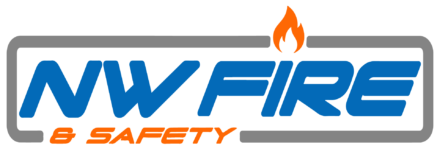Services
Portable Fire Extinguishers
Fire extinguishers are the first line of safety for most businesses. So to have a properly inspected, maintained, and charged fire extinguisher when needed is of the upmost importance. That’s why we provide complete fire extinguisher service; from annual or monthly inspections, to recharges or replacements!


Fire Suppression Systems
Restaurants, Schools, Hospitals, Body Shops, and many other organizations rely on their fire suppression systems to work as designed in the case of a fire emergency, Regularly scheduled maintenance is the number one step to ensuring that your system is in compliance and that it will operate as designed when necessary.
Emergency Lighting
When your building loses power, few things are as important as working emergency lighting and well lit exits. Let us make sure that both your emergency and exit lights are in top working order, so that your business is prepared the next time the power goes out!

F.A.Q.
Frequently Asked Questions
Maintenance inspections for portable fire extinguishers should be done once per year, according to OSHA 29 CFR 1910.157(e)(3). “Maintenance” means a thorough examination and repair, as needed, of all your facility’s portable fire extinguishers, as covered in NFPA 10(98), Sec. 4-4.
Annual fire extinguisher maintenance inspections should be performed by a professional fire protection company. These companies have the proper tools and training to ensure optimal compliance while recognizing and correcting any potentially hazardous situations. Once a fire extinguisher passes its annual maintenance, it is verified with a dated inspection tag. That tag is good for one year from the date indicated. If the unit fails to pass the inspection, it must be repaired or replaced.
In addition to monthly inspections, the commercial kitchen fire suppression system is required to be serviced by properly trained and qualified persons at least every 6 months. This service must include a test of all actuation and control components, including remote manual pull stations, mechanical and electrical devices, detectors and actuators to ensure that they are in operable condition. A visual inspection of fire alarm interconnect switches is also required. Fusible links of the metal alloy type and automatic sprinkler heads of the metal alloy type are required to be replaced at least semiannually. Fusible links of other than the metal alloy type and bulb-type automatic sprinkler heads are required to be examined and cleaned or replaced at least annually.
Fire alarm interconnect switches are required to be tested annually by mechanically or electrically operating the switch to verify receipt of a signal at the fire alarm control panel. This testing should be performed as part of the annual test conducted of the building fire alarm system.
Cylinders for wet chemical kitchen hood extinguishing systems must be hydrostatically tested every 12 years.
According to National Fire Protection Agency (NFPA) 101: Life Safety Code, all exit lights and emergency lights must be inspected and tested both monthly and annually.
Additionally, OSHA, the International Fire Code, and the International Building Code, and others, all provide codes regulating inspection and maintenance of your structure’s exit and emergency lighting.
Finally, your local authority having jurisdiction (AHJ) makes the final call on what standards and rules must be enforced and may add more of their own.
Every commercial restaurant kitchen should be equipped with an exhaust hood to remove grease-laden vapors from the fuel sources and cooking surfaces of each cooking appliance. Operating without an exhaust system is dangerous for employees, customers and the facility itself. However, even with the most advanced equipment, grease buildup will occur over time depending on the type and frequency of cooking happening in the kitchen.
It’s easy to spot the grease buildup on the underside of the hood canopy, on the components of the fire suppression system, in the duct work and all the way up to the exhaust fan on the roof. This grease buildup is the leading cause of restaurant fires around the globe. In order to remove the fire hazzard, all of the exhaust equipment must be thoroughly cleaned by a professional using the right chemicals and equipment.
According to NFPA 96, section 8-3.1: Hoods, grease removal devices, fans, ducts, and other appurtenances shall be cleaned to bare metal at frequent intervals prior to surfaces becoming heavily contaminated with grease or oily sludge. After the exhaust system is cleaned to bare metal, it shall not be coated with powder or any other substance. The entire exhaust system shall be inspected by a properly trained, qualified and certified company or person(s) acceptable to the authority having jurisdiction in accordance with Table 8-3.1.
Exhaust hood cleaning requirements and best practices are outlined in Table 8-3.1 Exhaust System Inspection Schedule in NFPA 96:
- Monthly – Systems serving solid fuel cooking operations
- Quarterly – Systems serving high-volume operations, such as 24-hour cooking, charbroiling, wok cooking, etc.
- Semi-Annually – Systems serving moderate volume cooking operations.
- Annually – Systems serving low volume cooking operations, such as day camps, churches, seasonal businesses, etc.
